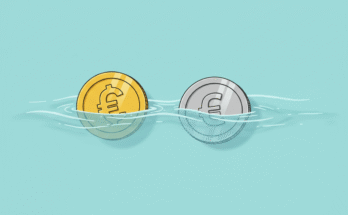Decentralized Finance, or DeFi, has been one of the most groundbreaking advancements in the world of blockchain and cryptocurrency. By offering financial services without the need for traditional intermediaries like banks, DeFi has opened up a world of possibilities for individuals across the globe. But as we look ahead to 2025, what does the future hold for this innovative sector? Let’s dive into the potential risks, rewards, and regulations that could shape DeFi in the coming years.
![The Future of DeFi in 2025 [Risks, Rewards & Regulations]](https://mineatech.com/wp-content/uploads/2025/06/the-future-of-defi-in-2025-risks-rewards-amp-regulations-1024x640.png)
[Rewards] A World of Opportunities
The promise of DeFi is immense. By 2025, we could see even greater adoption of decentralized platforms as more people become aware of their benefits. Here are some of the key rewards we might expect:
- Financial Inclusion on a Global Scale: One of DeFi’s most significant benefits is its ability to provide financial services to unbanked and underbanked populations. With just a smartphone and internet access, anyone can participate in the global economy. By 2025, we may see DeFi platforms reaching millions more people in developing regions, empowering them with tools like savings accounts, loans, and investment opportunities.
- Innovation in Financial Products: DeFi has already introduced us to concepts like yield farming, liquidity pools, and decentralized exchanges (DEXs). By 2025, we can expect even more creative financial products and services that cater to diverse needs. Imagine lending protocols tailored for small businesses or insurance policies governed by smart contracts DeFi could redefine how we think about traditional finance.
- Enhanced User Experience: Let’s be honest, DeFi platforms can sometimes feel intimidating for newcomers. But as the sector matures, usability will likely improve. By 2025, we could see more user-friendly interfaces, better educational resources, and seamless integration with existing financial tools, making DeFi accessible to everyone from tech-savvy crypto enthusiasts to everyday users.
- Interoperability Across Blockchains: One of the current limitations of DeFi is the fragmentation between different blockchains. However, with advancements in cross-chain technology, we could see a future where assets and services flow freely across networks. This would create a more unified and efficient DeFi ecosystem.
[Risks] What Could Go Wrong?
While the potential rewards are exciting, it’s important to acknowledge the risks that could hinder DeFi’s growth. Here are some challenges that may arise by 2025:
- Security Concerns: DeFi platforms are built on smart contracts, which are essentially lines of code. While they offer transparency and automation, they’re not immune to bugs or vulnerabilities. Hacks and exploits have already caused significant losses in the past, and without robust security measures, this risk will persist in the future.
- Market Volatility: The cryptocurrency market is notoriously volatile, and this instability can spill over into DeFi. For example, sudden price swings can lead to liquidations in lending protocols or impermanent loss in liquidity pools. While innovative solutions may emerge to mitigate these risks, volatility will remain a challenge for users and developers alike.
- Scams and Fraud: As with any emerging industry, bad actors are always looking for ways to exploit unsuspecting users. Rug pulls (where developers abandon a project after collecting funds) and fraudulent projects tarnish the reputation of DeFi as a whole. By 2025, stricter vetting processes and community-driven oversight may help reduce these incidents, but they won’t disappear entirely.
- Scalability Issues: Many blockchains struggle with scalability, leading to high transaction fees and slow processing times during periods of heavy demand. If these issues aren’t addressed, they could limit DeFi’s ability to grow and serve a global audience.
[Regulations] The Inevitable Balancing Act
As DeFi continues to disrupt traditional finance, it’s inevitable that regulators will take a closer look at the space. By 2025, we could see a more defined regulatory framework for DeFi, but what might that look like?
- KYC and AML Compliance: Governments around the world are likely to push for Know Your Customer (KYC) and Anti-Money Laundering (AML) measures within DeFi platforms. While this could enhance transparency and reduce illicit activity, it may also clash with the core ethos of decentralization and privacy.
- Taxation Policies: As DeFi gains mainstream adoption, tax authorities will want their share of the pie. Expect clearer guidelines on how earnings from yield farming, staking, or trading are taxed. This could simplify things for users but also add new layers of responsibility.
- Standardization Across Jurisdictions: One of the biggest challenges for regulators will be creating standardized rules that apply across borders. Since DeFi operates on a global scale, inconsistent regulations could create confusion for users and developers alike.
- Balancing Innovation and Oversight: Perhaps the biggest challenge for regulators will be finding the right balance between promoting innovation and protecting consumers. Too much regulation could stifle creativity, while too little oversight could leave users vulnerable to risks.
[The Road Ahead] A Collaborative Future
As we look toward 2025, it’s clear that the future of DeFi will be shaped by collaboration between developers, users, and regulators. While there are certainly risks to navigate, the potential rewards make it an exciting space to watch.
For users, staying informed and cautious will be key to making the most of DeFi’s opportunities while avoiding its pitfalls. For developers, prioritizing security and usability will help build trust in the ecosystem. And for regulators, fostering an environment that encourages innovation while protecting consumers will be critical.
DeFi has already come a long way in just a few short years, and its journey is far from over. Whether you’re a seasoned crypto enthusiast or someone just starting to explore this fascinating world, there’s no better time to get involved than now. Who knows? By 2025, you might just be part of the next big wave in decentralized finance.



